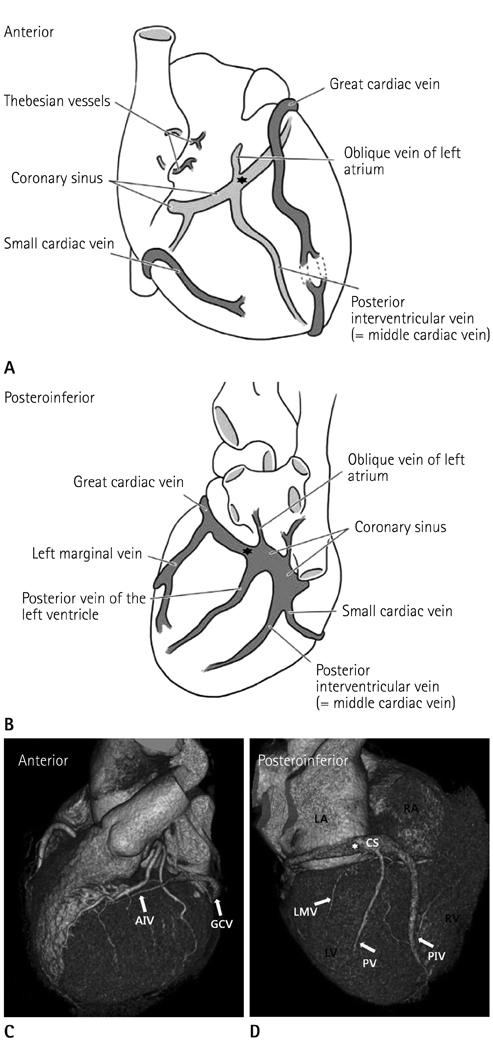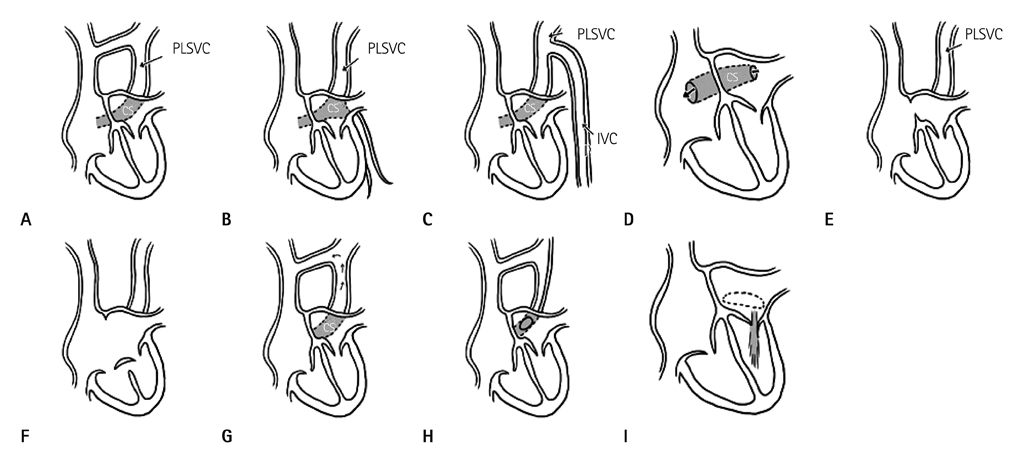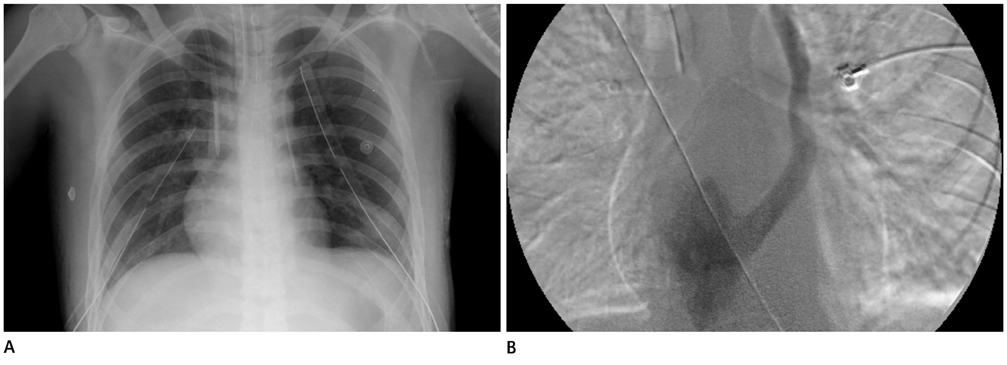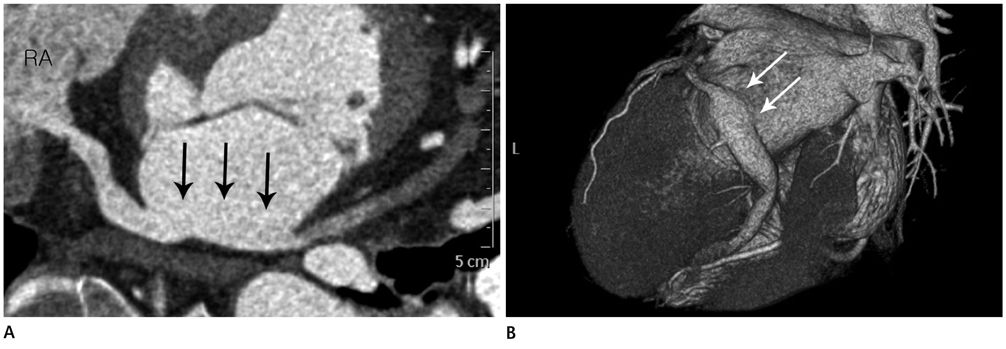J Korean Soc Radiol.
2013 Jul;69(1):29-37. 10.3348/jksr.2013.69.1.29.
Congenital Anomalies of the Coronary Sinus: A Pictorial Essay
- Affiliations
-
- 1Department of Radiology, College of Medicine, Kyung Hee University, Seoul, Korea. kwon98@khu.ac.kr
- KMID: 2002887
- DOI: http://doi.org/10.3348/jksr.2013.69.1.29
Abstract
- Congenital anomalies involving the coronary sinus (CS) tend to receive relatively little attention because they rarely cause clinical symptoms or disturbances of cardiac function. However, as imaging modalities have been developed over time, the detailed anatomy of the heart, including CS anomalies, can now be evaluated more precisely. The purpose of this pictorial review is to illustrate multi-detector computed tomography findings of various congenital anomalies of the CS. The cardiac venous system and its embryologic development are also described in detail to familiarize radiologists with various congenital anomalies of the CS.
MeSH Terms
Figure
Reference
-
1. Saremi F, Muresian H, Sánchez-Quintana D. Coronary veins: comprehensive CT-anatomic classification and review of variants and clinical implications. Radiographics. 2012; 32:E1–E32.2. Muster AJ, Naheed ZJ, Backer CL, Mavroudis C. Is surgical ligation of an accessory left superior vena cava always safe? Pediatr Cardiol. 1998; 19:352–354.3. Ruengsakulrach P, Buxton BF. Anatomic and hemodynamic considerations influencing the efficiency of retrograde cardioplegia. Ann Thorac Surg. 2001; 71:1389–1395.4. Chou MC, Wu MT, Chen CH, Lee MH, Tzeng WS. Multidetector CT findings of a congenital coronary sinus anomaly: a report of two cases. Korean J Radiol. 2008; 9:Suppl. S1–S6.5. Mantini E, Grondin CM, Lillehei CW, Edwards JE. Congenital anomalies involving the coronary sinus. Circulation. 1966; 33:317–327.6. O'Brien JP, Srichai MB, Hecht EM, Kim DC, Jacobs JE. Anatomy of the heart at multidetector CT: what the radiologist needs to know. Radiographics. 2007; 27:1569–1582.7. Bax JJ, Abraham T, Barold SS, Breithardt OA, Fung JW, Garrigue S, et al. Cardiac resynchronization therapy: Part 2--issues during and after device implantation and unresolved questions. J Am Coll Cardiol. 2005; 46:2168–2182.8. Moore KL, Persaud TVN. The developing human: clinically oriented embryology. 7th ed. Philadelphia, PA: Saunders;2003. p. xv. p. 560.9. Anderson RH, Brown NA, Moorman AF. Development and structures of the venous pole of the heart. Dev Dyn. 2006; 235:2–9.10. Cha EM, Khoury GH. Persistent left superior vena cava. Radiologic and clinical significance. Radiology. 1972; 103:375–381.11. Pálinkás A, Nagy E, Forster T, Morvai Z, Nagy E, Varga A. A case of absent right and persistent left superior vena cava. Cardiovasc Ultrasound. 2006; 4:6.12. Edwards JE, DuShane JW, Alcott DL, Burchell HB. Thoracic venous anomalies. III. Atresia of the common pulmonary vein, the pulmonary veins draining wholly into the superior vena cava. AMA Arch Pathol. 1951; 51:446–460.
- Full Text Links
- Actions
-
Cited
- CITED
-
- Close
- Share
- Similar articles
-
- Congenital Anomalies of the Coronary Arteries
- Anomalous Right Coronary Artery From the Left Coronary Sinus With an Interarterial Course: Is It Really Dangerous?
- Anomalous Origin of the Left Coronary Artery from the Right Sinus of Valsalva, which Presented as Acute Myocardial Infarction
- Multidetector CT Findings of a Congenital Coronary Sinus Anomaly: a Report of Two Cases
- Sudden Death Associated with Anomalous Left Coronary Artery Origin from Right Sinus of Valsalva with Posterior Course












